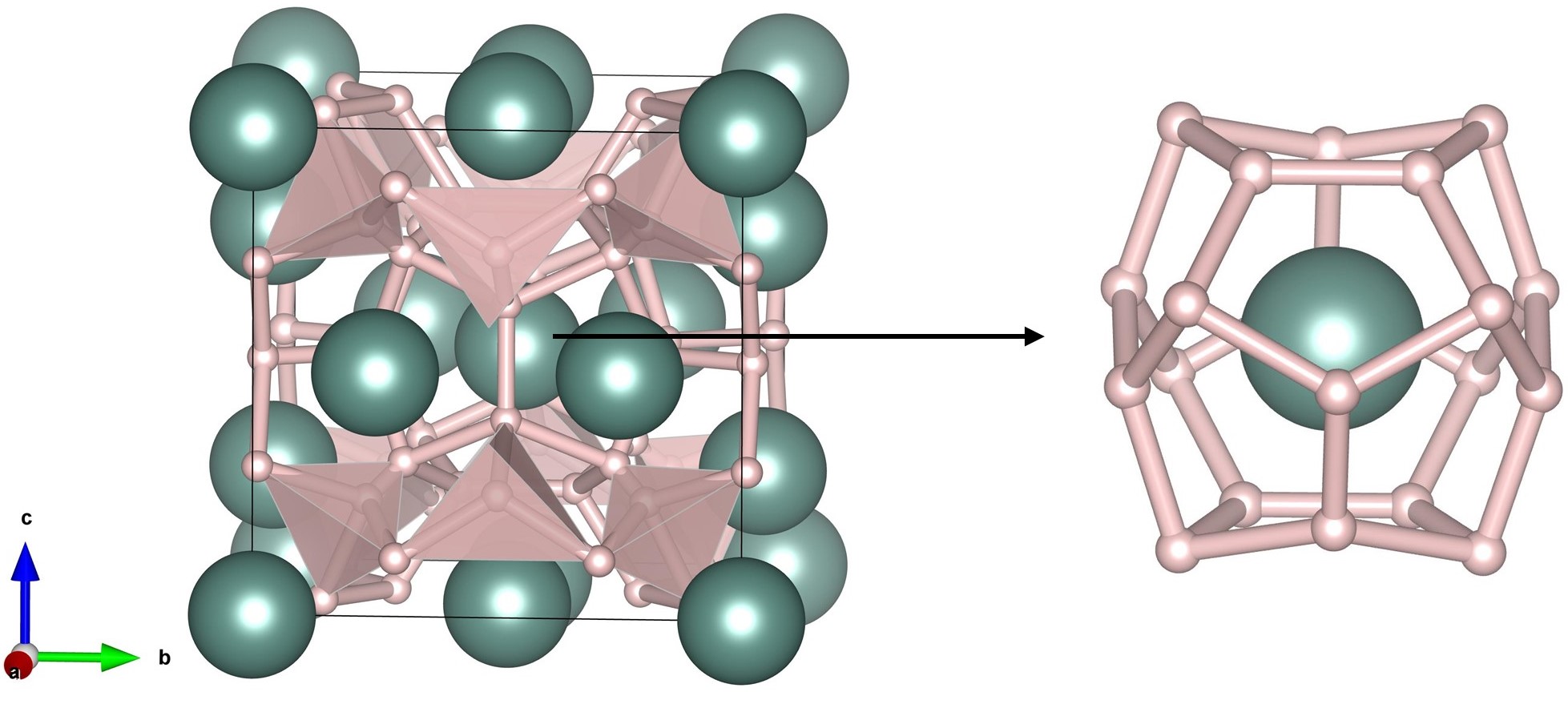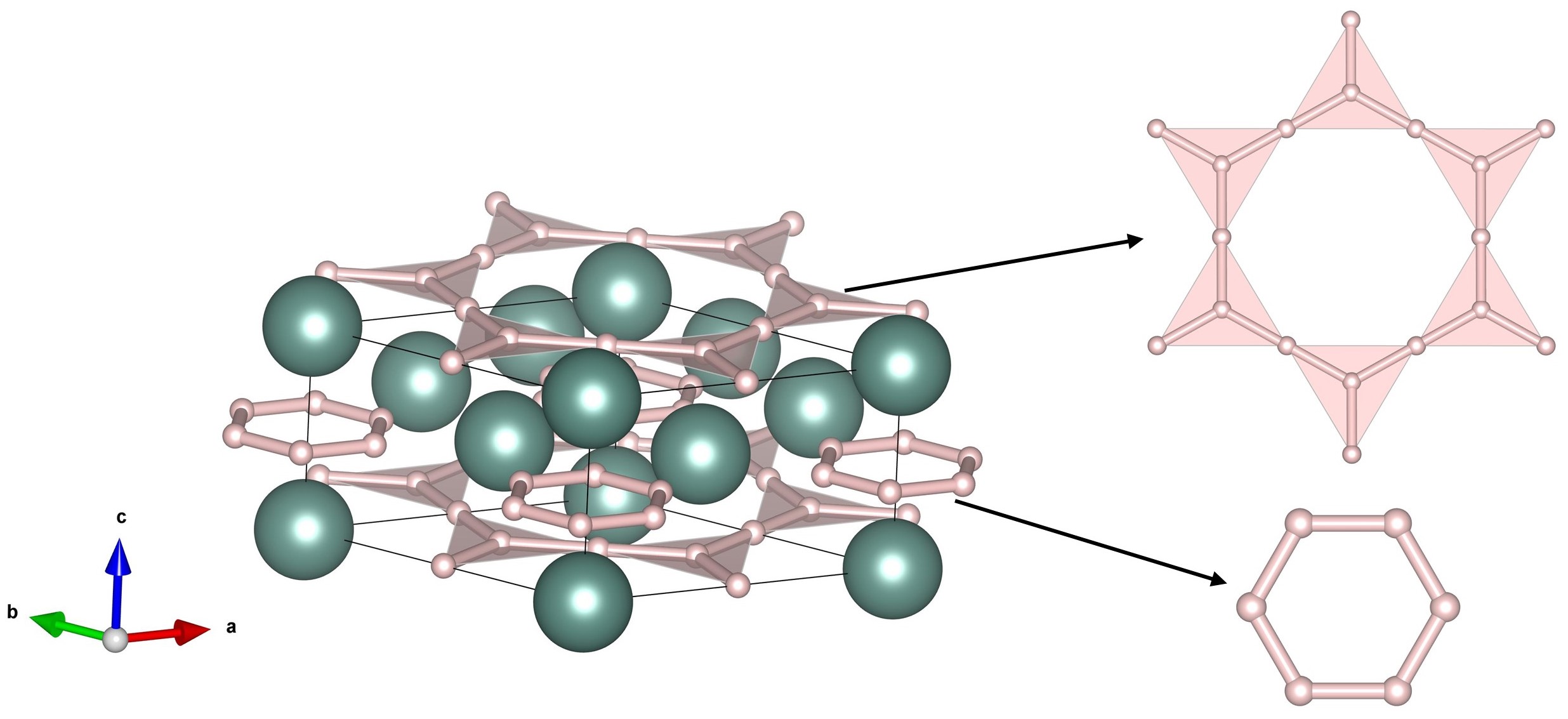- Home
- News
- Spotlight on Science
- X-ray diffraction...
X-ray diffraction probes superconductivity in yttrium hydrides
17-04-2024
In the search for room-temperature superconductors, researchers have synthesized five previously unknown yttrium hydrides and two yttrium allotropes, and studied their structure and composition using single-crystal X-ray diffraction at beamlines ID11, ID27 and ID15B. The results uncover the chemical complexity of the yttrium-hydride system under extreme conditions, and highlight the challenges in identifying superconducting phases in materials synthesized under high pressures.
Several rare-earth superhydrides have garnered attention for their potential as near-ambient-temperature superconductors at high pressures. In most cases, they are synthesized in diamond anvil cells at extreme pressures and temperatures, resulting from chemical reactions. Their phase and chemical compositions are often unknown, which make claims of superconductivity uncertain. The measurable critical temperature Tc, which indicates superconductivity, depends on many factors, including the purity of the sample and its hydrogen content. Thus, the existence of near-room-temperature high-pressure superconductors remains under scrutiny.
To shed light on the phase composition and crystal chemistry of hydrides at extreme conditions, researchers from the University of Bayreuth investigated the products of chemical reactions in diamond anvil cells. They subjected yttrium to laser heating with two hydrogen-rich precursors – ammonia borane or paraffin oil – reaching temperatures up to 3500 K at pressures of about 170 GPa. Synchrotron single-crystal X-ray diffraction (SCXRD) experiments were conducted at ESRF beamlines ID11, ID27 and ID15B to structurally characterise the multiphase, microcrystalline samples. Additional experiments were carried out at Petra III in Germany and the Advanced Photon Source in the USA.
Fig. 1: The crystal structures of two yttrium hydrides with the chemical formulas Y4H23 (top) and Y3H11 (bottom). Yttrium atoms are green; interconnected hydrogen atoms are light pink.
The research yielded several discoveries, including five novel yttrium hydrides (Y3H11, Y2H9, Y4H23, Y13H75 and Y4H25), two new yttrium allotropes and an yttrium carbide (YC2), alongside the already known cubic and tetragonal YH3 yttrium compounds. While the positions of non-hydrogen atoms in the crystal structures could be determined from synchrotron SCXRD data, the positions of hydrogen atoms could not be, necessitating the estimation of hydrogen content from empirical relations for the volume per yttrium atom. The Endeavour software aided in analysing possible hydrogen arrangements in unknown hydrides, further refined by ab initio calculations (Figure 1). The structural compositions revealed for each compound indicate the complexity and diversity of yttrium hydrides under high-pressure conditions. Notably, hydrogen content in the discovered hydrides increased with pressure, from 1:3 in YH3 at 87 GPa to 1:6.25 in Y4H25 at 171 GPa.
This study emphasizes the intricate nature of the yttrium-hydrogen system and its multiphase character under high pressure. Complex phase diversity, variable hydrogen content in yttrium hydrides, and their metallic nature as revealed by ab initio calculations represent some of the challenges in identifying superconducting phases and understanding electronic transitions in high-pressure synthesized materials. The results significantly contribute to understanding the behaviour of materials at extreme conditions, and shed light on the nature of potentially superconducting hydrides.
Principal publication and authors
Diverse high-pressure chemistry in Y-NH3BH3 and Y–paraffin oil systems, A. Aslandukova (a), A. Aslandukov (a), D. Laniel (b), Y. Yin (a,c,d), F. I. Akbar (a), M. Bykov (e), T. Fedotenko (f), K. Glazyrin (f), A. Pakhomova (g), G. Garbarino (g), E.L. Bright (g), J. Wright (g), M. Hanfland (g), S. Chariton (h), V. Prakapenka (h), N. Dubrovinskaia (a,d), L. Dubrovinsky (a), Sci. Adv. 10, 47, eadl5416 (2024); https://doi.org/10.1126/sciadv.adl5416
(a) University of Bayreuth, Bayreuth (Germany)
(b) University of Edinburgh, Edinburgh (UK)
(c) Shandong University, Jinan (China)
(d) Linköping University, Linköping (Sweden)
(e) University of Cologne, Cologne (Germany)
(f) DESY, Hamburg (Germany)
(g) ESRF
(h) University of Chicago, Chicago (USA)
| About the beamlines |
| ID11 |
| The Materials Science beamline, ID11, is dedicated to high-energy X-ray diffraction (XRD) and imaging studies. Recently, the beamline underwent an upgrade, adding a nano-resolution station located 100 metres from the source. This enhancement enables very high spatial resolution (<100 nm) diffraction measurements. ID11 provides a comprehensive suite of X-ray diffraction techniques, including 3D-XRD, diffraction contrast tomography, diffuse X-ray scattering, imaging, pair-distribution function analysis and powder diffraction. The samples analysed span a wide range, from amorphous and powder materials to poly-crystals and single crystals. Additionally, the sample size can vary from nano- to micro- to larger-scale samples. Users have access to a diverse set of sample environments. |
| ID15B |
| The beamline ID15B is dedicated to determining the structural properties of solids at high pressure using angle-dispersive diffraction with diamond anvil cells. The beamline operates at a working energy of 30 keV for high-pressure experiments with a flux of 1012 photons/s at 200 mA. The beam size on the sample is typically 5x5 µm2 but can be narrowed down to 1x1 µm2 for megabar pressure experiments. The station is equipped with a variety of sample environments, including several membrane-type diamond anvil cells (0-100 GPa), a liquid He-cooled cryostat to perform high-pressure experiments at low temperatures (down to 10 K) and external resistive heating equipment for high temperatures up to 600 K. Additionally, an external Nd-YAG laser system is available for annealing samples at high-temperatures within the diamond anvil cell. |
| ID27 |
| The recently upgraded beamline ID27 addresses some of the most exciting and challenging questions in science at extremely high pressures and temperatures, such as exploring the conditions deep inside planets, searching for room-temperature superconductivity and synthesizing new super-hard materials. The beamline accommodates sample environments such as the double-sided laser-heating system, the Paris-Edinburgh press, the nano-stage and the high-pressure helium cryostat. With a much higher photon flux and smaller beam sizes than its predecessor (300×300 nm2), as well as better detector systems, it enables a new class of ultra-high-pressure experiments (P> 4 Matm), time-resolved experiments with millisecond resolution, 2D micro-fluorescence mapping, and in-situ X-ray imaging. |





